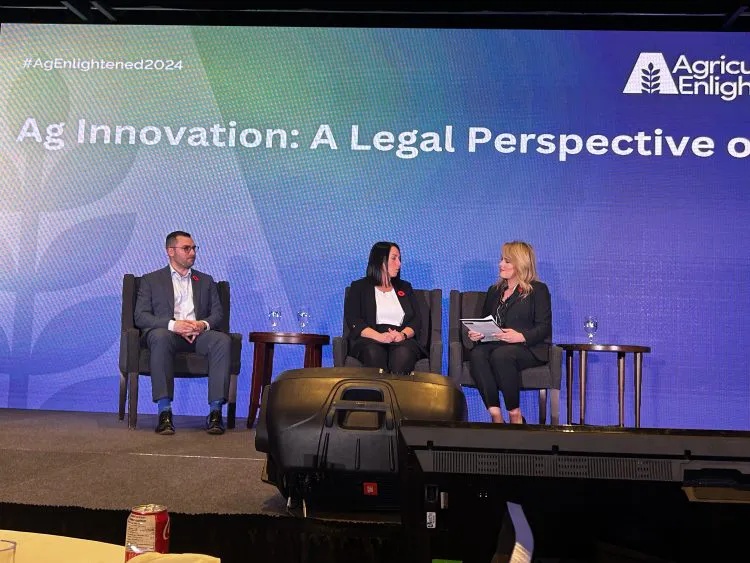Changes to Canada’s Patent Rules: Introducing Excess Claim Fees

Authors: Adam Lakusta, Gregory Forrest
Amendments to Canada’s Patent Rules (the “Rules”) took effect on October 3, 2022, introducing some of the most significant changes to patent prosecution in the past 20 years.
Some of the most significant changes include:
- Applicants will receive three examiner’s reports before being required to make a request for continued examination (“RCE”). After the first RCE, applicants will be required to make an RCE every two examiner’s reports. The fees for filing an RCE are the same as requesting examination (currently $816 for a large entity and $408 for a small entity).
- A Conditional Notice of Allowance (“CNA”) has been introduced so examiners can notify applicants of minor issues to be addressed along with payment of the final fee. Currently, it is unclear whether CNAs count toward the number of examiner’s reports before an applicant is required to file an RCE and pay the associated fee.
- A fee of $100 (or $50 for a small entity) for every claim in excess of 20 introduced during prosecution. For example, if an application as originally examined has 25 claims but on issuance has 20, the applicant will be required to pay $500 in excess claim fees.
Some less important changes are:
- Applicants are now able to amend applications when Notices of Allowance, including CNAs, have been withdrawn.
- Applicants now have to request a change in identity to the inventor(s) before receiving the notice of allowance, including CNAs. Previously, this was only required before the payment of the final fee.
- The Rules now are explicit that examination is suspended when an application is deemed abandoned.
Avoiding “Unreasonable Delays”
Arguably, the most impactful change is the introduction of excess claims fees and the RCE regime. According to the Canadian Intellectual Property Office (CIPO), the purpose of the changes, and the excess claim fees in particular was to meet the patent term adjustment obligations under the Canada-U.S.-Mexico Trade Agreement (CUSMA). By charging excessing claim fees, CIPO is trying to is to reduce the amount of time patent applications take to issue. Under CUSMA, CIPO is obligated to process patent applications efficiently and to avoid “unreasonable delays.”
An “unreasonable delay” is defined by CUSMA as being the later of 1) from issuance, a delay of five years from the date of filing, or 2) three years from the date of requesting examination of an application. Such delays must not be as a result of the applicant or anything for which CIPO is not directly responsible. As CIPO is directly responsible for the processing time of patent applications, CIPO is trying to discourage applications having large amounts of claims by introducing excess claim fees. CIPO also is discouraging prolonged prosecution of applications through the introduction of the RCE regime.
Addressing Double Patenting Could Become Costly
Superficially, the approach taken by CIPO is in line with other major markets such as the United States Patent and Trademark Office and the European Patent Office. However, this view does not take into account Canada’s uniquely strict doctrine relating to “double patenting.”
In Canada, there is “same invention” double patenting and “obviousness” double patenting. Same invention double patenting occurs when two patents claim essentially the same subject matter. Obviousness double patenting occurs when there is “no inventive step” between the subject matter of two patents originating from the same applicant.
To address the issue of double patenting in the U.S., patentees with applications covering similar subject matter can file what is called a “terminal disclaimer.” This causes the second similar patent to expire on the same date as the first similar patent. Patentees in Canada cannot file terminal disclaimers and must find alternate ways to overcome double patenting objections.
Commonly, applicants will file applications in Canada with many different claim sets in order to elicit a lack of unity objection from the patent examiner. The unity objection provides immunity to subsequent double patenting objections during prosecution and allegations during patent litigation. As the number of claims is now restricted by excess claim fees, applicants and their patent agents must perform previously unnecessary steps. For example, applicants with a number of claimed inventions will file the independent claims for each of the inventions in order to elicit a double patenting objection. Once the double patenting objection has been received, the unelected claims may be cancelled and dependent claims may be reintroduced.
In another example, applicants may file serial applications to incremental improvements to an invention over a course of years. When a double patenting objection is received in these applications, patent agents may frequently introduce claims into the earliest application so the examiner considers whether support exists within the earlier application. As this strategy would both increase the number of claims in the earliest application and elicit an examiner’s report (and likely an RCE), there may be considerable cost to a previously viable approach.
One method applicants may use to minimize Canadian examination costs in the wake of excess claim fees is to reduce the number of dependent claims before or at the time of requesting examination. The applicant can then introduce multiple independent claims directed to the different embodiments of the invention. This method allows examiners to assess the claims for unity of invention at no additional governmental fee to applicant. Once unity of invention has been determined, applicants will know whether filing of divisional applications is necessary.
A Chilling Effect on Canada’s Patent Regime?
Going forward, patent agents will explore a number of different approaches to address the introduction of excess claim fees and the RCE regime to Canadian patent prosecution. Foreseeably, excess claim fees and RCE fees may cause cost-conscious patentees not to file further applications protecting their innovations, and worse, may even cause patentees to avoid filing in Canada altogether.
In the short term, introducing excess claim fees may assist Canada in fulfilling its international obligations, but charging such fees presents significant obstacles. It is possible that Canadian applicants may discover workable alternatives to avoid double patenting objections than those described in this article; however, the uncertainty caused by introducing excess claim fees without also addressing the issue of double patenting may have a chilling effect on Canada’s patent regime.
If you have questions about how these new Rules could affect your patent applications, a member of our Patents, Copyright and Industrial Design team would be pleased to assist you. Contact us to learn more.
Note: This article is of a general nature only and is not exhaustive of all possible legal rights or remedies. In addition, laws may change over time and should be interpreted only in the context of particular circumstances such that these materials are not intended to be relied upon or taken as legal advice or opinion. Readers should consult a legal professional for specific advice in any particular situation.


